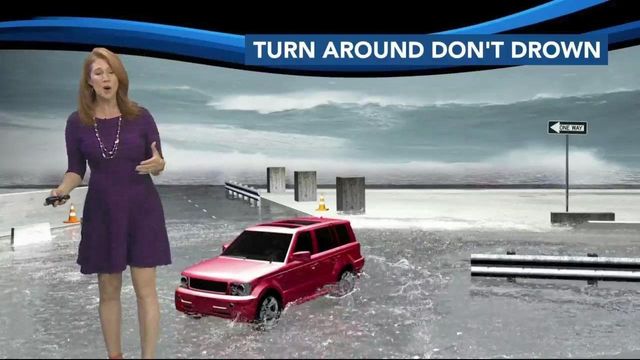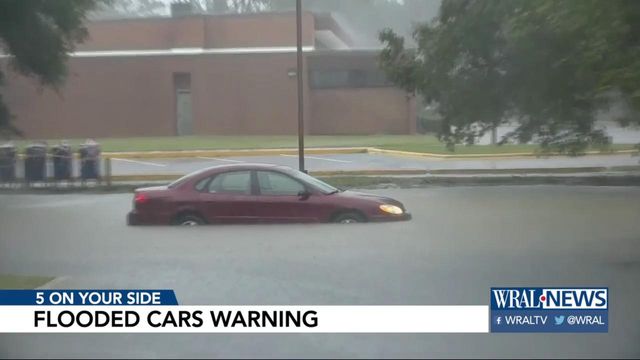Water on roads a killer during hurricane season
Troopers advise against driving through standing water deeper than an inch or two. All types of vehicles are vulnerable to being swept off the road by rushing waters, making the rescue by the Highway Patrol and other groups that much more difficult.
Posted — UpdatedAfter the strong winds and high waves disappear, the flood waters created by a hurricane linger. And in that calm after the storm, residents venture out to explore the damage.
Most hurricane deaths and injuries occur inland when people try to drive through flooded roads. And it doesn't take much water to make trouble for motorists.
Troopers advise against driving through standing water deeper than an inch or two. Dirty water can occlude a washout, and the depth can be hard to determine.
All types of vehicles are vulnerable to being swept off the road by rushing waters, making the rescue by the Highway Patrol and other groups that much more difficult.
The North Carolina Department of Transportation offered these tips for driving in wet weather:
- Avoid driving through flooded areas, even if they seem shallow. Just one foot of water can float many vehicles, while two feet of rushing water can carry away SUVs and pick-ups.
- After driving through a puddle, tap your brake pedal to help dry your brake rotors.
- If your car starts to hydroplane, take your foot off the gas, apply the brakes in a steady, slightly firm manner without stomping and steer in the direction of the skid. If you have a manual transmission, push in the clutch and let the car slow down on its own.
- If the rain is extremely heavy, pull over in a safe area in a parking lot or on the roadside with your emergency flashers on, away from any trees or other tall objects, and wait for the weather to improve.
- Allow more travel time.
- Turn on your low beam headlights and use the defroster to increase visibility.
- If possible, stay in the middle lane where the road tends to be higher.
- Reduce your speed by at least five to 10 miles per hour and allow at least twice the normal following distance.
- Signal for turns ahead of time and brake early as you near a stop. Remember, roads are slickest in the first 10 to 15 minutes, especially if it has not rained for a while.
- If a traffic signal is knocked out by a storm, regard the intersection as a four-way stop. If two or more vehicles arrive at the same time, the car to the right has the right of way and after signaling, may move in any direction. If two facing vehicles approach the intersection at the same time, any car traveling straight ahead or turning right has the right of way.
Related Topics
• Credits
Copyright 2024 by Capitol Broadcasting Company. All rights reserved. This material may not be published, broadcast, rewritten or redistributed.






